The vote to leave the EU has heaped further pressure on the UK’s top 150 food & drink producers, with the return of inflation. But as our analysis shows, there is an even bigger potential threat in the form of…
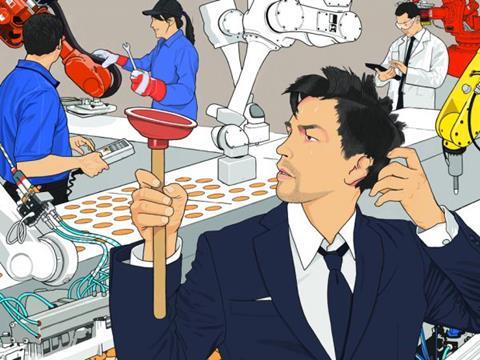
UK food suppliers entered 2017 fighting to cope with rapidly changing shopping habits, fragmenting tastes and retail customers under unprecedented pressure. But those headwinds could look like a breeze compared with the storm that is to come.
Growth of the Top 150 UK food producers, already at a 15-year low, has been in short supply as widespread deflation strangled revenues, according to the OC&C/Grocer 150 study. After 15 consecutive years of growth, sales fell for the second consecutive year and, at -0.8%, at a significantly faster rate than the -0.1% the previous year - and both were well down on the 3.9% long-term average sales growth for the industry.
The picture was more encouraging for the bottom line, with margins increasing 0.8 ppts to 6.1% - the best performance for six years and getting back towards the long-term industry average of 6.4%, as major restructuring by Top 150 stalwarts Premier Foods and Dairy Crest, along with more widespread industry action on costs and efficiencies, helped nudge margins in the right direction, too.
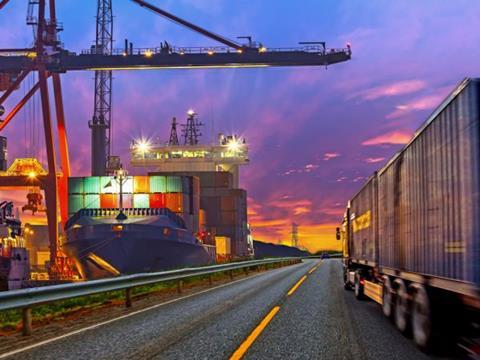
Exports are actually falling in real terms
The idea of Brexit was to remove the shackles and unleash in-demand British business to trade across the globe. But the reality is more mixed.
The weakening pound did boost international sales on a headline basis - with the Top 150 up 9.7% (compared with a 1.5% decline in domestic revenues) and global sales up to 20.7% of the pot from 19% in 2015.
But all these gains were driven by currency. On a like-for-like basis, international sales actually fell last year. Stripping out currency gains, non-UK revenues were down 2.3%, which is a worse performance than the 0.9% drop seen in 2015 and well down on the 8% growth in 2014.
Of those companies that state international revenues, 21 improved global sales, but 22 saw them fall.
So is the export opportunity an illusion?
OC&C’s Will Hayllar believes any boost to export will take time. “A one-year currency shift won’t be any help unless you’ve already got the engine in place that can drive international sales.”
He points to the pork industry, which has “worked for years to get export licences and regulatory approvals and is now enjoying a margin boost because they can sell parts of the pig less attractive in the UK”.
A number of firms with big international sales are not exporters in the true sense either. Hilton Food Group establishes fully-fledged businesses in local markets. That takes time and money.
“There is definitely some hyperbole around how attractive the export opportunity is,” says Quorn’s Kevin Brennan. “If margins are being squeezed and there is uncertainty in the core business, acting on that opportunity is not easy.”
In food, there are also a wide range of shorter shelf-life goods and producers of low-value pallets that make transporting goods globally unsuited to their businesses.
On a pure export basis, any perceived boost from the fall in the pound may already have been stripped out by an associated jump in international input costs. “The export argument can be fallacious because so many input costs are derived from impored products or affected by the exchange rate,” says Peel Hunt’s Charles Hall. “Niche areas such as whisky may be better off, but for food in general it doesn’t make our exports any more competitive.”
However, OC&C’s head of consumer goods Will Hayllar says the most significant driver of this improvement is the depressed input commodity prices last year, which provided some breathing space from the margin pressure the industry had been under in recent years. So while last summer’s vote for the UK to leave the EU brought some respite from deflation, it’s brought new threats too.
The dramatic post-Brexit collapse of the pound, for one, has ratcheted up input costs. Although there has been a September uptick in its value, it hit €1.08 in August - some 18% down since the Brexit vote - and about 14% down on the dollar at $1.28. The pound’s plunge did not trigger an immediate rise in international sourcing costs given hedging positions and longer-term supply contracts. But a currency driven jump in costs is inevitable - particularly as hedging positions have unwound - and the roaring return of input inflation is a direct threat to all UK suppliers.
“Deflation and lower costs can help insulate a lot of businesses, but when you get inflation and rising costs, the cream tends to come to the top even more because it becomes about how well you manage your business,” says Froneri head of UK and Ireland Mike Fraine.
The current rise in input costs cannot simply be absorbed by suppliers as a temporary hit to the bottom line. “The pressure on margins is now really significant,” says Natures Way Foods CEO Susan Barratt. “There’s a significant increase in costs in the marketplace and someone has to pay for that.”
Julian Marks, MD at fresh produce supplier Barfoots agrees: “When you have a shock like that, the reality is prices have to go up if your business is to remain sustainable. The challenge is how long it takes you between that shock and being able to take action to recover more money.”
These rising costs have led to the return of food price inflation, with supermarket prices now running at 2.4% higher year on year, according to the Grocer Price index, having been down 4% the month before Brexit.
Who’s going to take the hit?
That is well below the likely industry-wide rise in input costs since the pound’s slump. There is something of an in-built inertia between underlying cost inputs and the prices on the shelves, but OC&C’s Hayllar stresses that that inertia favours the producers when it comes to deflation, but the retailers in inflation. Clearly someone has to take the hit as commodity costs are up 8.5% in the second quarter of 2017..
So who is willing and able? OC&C research shows that of the £5.7bn of commodity inflation in 2007-08, only £100m was absorbed by producers and retailers with the rest passed on to consumers. This had already shifted by 2012, with producers sucking up £300m of the £3.3bn of commodity inflation and retailers absorbing £1bn.
Retailers and suppliers have both found their margins under pressure, and this mutual peril means they are increasingly seeing advantages to a more collaborative approach. As both are forced to find cost savings, relationships are morphing into ones of mutual benefit. “All our customers realise the lower-hanging fruit has gone,” says Natures Way’s Barratt. “You need to approach the supply chain in a different way to drive value and that is about building supply chains where people genuinely trust each other”.
Hilton Food Group CEO Robert Watson adds: “The way retailers want to work now is very transparent – we all need to work together create the most efficient supply chain.” While Froneri’s Fraine warns that the active range rationalisations in the supermarkets and the financial pressures on the supplier base means retailers “are going to become more reliant on good suppliers, because there will be less of them”.
This closer working relationship further plays into the hands of own label suppliers - a segment of the market that has coped better than bigger branded players as the discounters drive private label growth.
For years, own label has been growing faster than branded and this was especially marked last year, with their advantage increasing from 2.6 ppts to 4.6 as branded producer sales fell 3.1% compared with growth of 1.5% in own label.
While margin improvements were seen across the board – and branded retail high margins at 9% compared to own-label’s of 3.5% - for the first time return of capital employed of own label business overtook branded businesses on average.
Given the more transparent arrangements between own label suppliers and supermarkets, the likes of Hilton, Cranswick and Greencore also have simpler mechanisms for passing through cost increases to their customers.
Labour costs
The second intensifying pressure on margins is labour. Pressure was ratcheting up even before the Brexit vote as plans to introduce a national living wage of £9 per hour by 2020 will affect 37% of the food & drink workforce. But Brexit has poured petrol on the fire, threatening to limit the supply of labour and further escalate the rising cost of staff.
Before any agreement is confirmed, industry players are already seeing a potentially damaging effect in attracting and retaining EU nationals.
Marks says Barfoots, has seen “a dramatic drop” in applicants from the EU this year, resulting in a high-season labour shortage of around 10%-15%.
Hayllar points to a fall in net migration figures already given the currency devaluation means the pound is not as attractive to those looking to shift those earnings back into euros or other European currencies. “You certainly get a sense that the labour market is tightening,” he says. “It’s not the full effects of an immigration clampdown, but you are starting to see it is harder to recruit people from overseas.”
And there are significant doubts about whether the UK workforce has sufficient unemployment or a willing workforce to fill the gaps. This doesn’t only affect low-skilled manufacturing roles either, with the industry struggling to find technical workers and engineers.
“Every factory will not be able to stay open without access to EU workers as there will not be enough staff to go round - that will inevitably choke some low-margin businesses,” says Quorn CEO Kevin Brennan. “There are already fewer workers coming over and it is hurting some businesses.”
What exacerbates this ticking labour time bomb is an apparent lack of preparedness for the forthcoming squeeze. Despite the long-standing availability of a relatively cheap workforce, labour productivity has been in decline in recent years. Revenue per employee across the Top 150 decline by 5% in 2016 as companies failed to reduce staffing levels by the same rate their sales have declined. In fact, Top 150 companies increased headcount by 4.1% during the period, meaning staff costs as a proportion of revenue grew from 12.9% to 13.6%
Companies are trying to find ways to mitigate the risks - be that through vertical integration to achieve maximum efficiencies, taking out back-office roles to create flatter structures or tailoring their product portfolio to move to a higher-margin product mix.
But the only cure for the coming labour reckoning is for industry to wean itself off its addiction to cheap labour.
Ultimately, a higher-cost labour force poses more fundamental questions of the manufacturing process that can’t be answered merely by selective belt tightening. Eventually, the core production process itself needs to become more efficient and that means more automation and fewer people. “It is almost inevitable that if labour gets relatively more expensive then the optimum process will shift to a more automated solution,” says Hayllar.
On that, the UK lags well behind many other countries. “We’re coming from a market where comparatively to the rest of the Europe labour has been pretty cheap and capital was a bit more expensive,” says Froneri’s Fraine. “We’re now starting to see that shift so the only way out of that is to probably increase capex and automation.
The Danish pork industry is an example of a sector where labour is expensive and therefore it has heavily invested in technology and automation to remain internationally competitive. Hayllar notes: “The impending squeeze is well understood by executives in the industry, but I think the response to tackling that has been a bit slow to come through.”
Capital expenditure across the Top 150 declined last year despite the looming labour threat, with capex sliding 3.3% to £1.9bn (on top of a 0.8% reduction in 2016) and sliding to 3% of revenues from 3.1% last year.
Brennan notes: “With inflation coming in, margins are getting squeezed, which leaves less access to cash for capex. But also there are so many things that can affect financial investment surrounding Brexit it is not surprising businesses are holding back.”
UK-listed and private equity-owned companies continue to grow capex, but subsidiaries of multinationals - who have more regional options where to invest - have shied away from investing in the UK, with capex down by 9.8% in that segment.
Another reason behind the comparative lack of investment in automation is that employee-heavy production methods are inherently more flexible and able to quickly respond to changing products and formats.
“A downside to automation is reducing flexibility because of change-over periods and machine cleaning, whereas a company like Finsbury can currently change from one cake to another very quickly,” says Charles Hall, head of research at Peel Hunt.
Nature’s Way Baratt adds: “The great thing about people is they’re very flexible. As an industry we change for the consumer, so you have to be a bit careful about automation as you need to know consumers will keep buying what you’re planning to produce”.
There is also a trade-off between the savings made on fewer production-line staff and having to employ more expensive highly skilled technical staff to operate the automated processes.
It is not just on production lines where automation can play a part, but throughout the whole supply chain. In particular, food harvesting businesses can benefit from technology in terms of automated harvesting or genetic interventions to improve crop yields. Logistics is also a prime area for technological intervention in terms of packing, pallet-stacking and transportation, while on the production line quality control can become more automated in addition the manufacturing process itself.
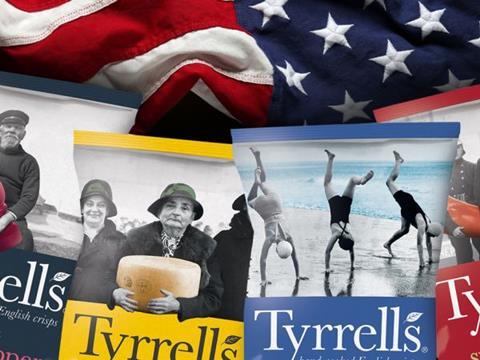
M&A: US still sees value in UK businesses
Global political upheaval and the looming shadow of Brexit meant all but the most committed took their fingers off the M&A trigger last year.
Just five deals above £20m were recorded among the Top 150 last year, with the paltry total of £0.7bn less than half the average levels of previous years amid the lowest total of deals since the height of the credit crunch in 2009.
However, one key post-Brexit theme is already emerging - the start of a potential wave of buyers from over the Atlantic taking advantage of the weak pound to snap up UK assets.
The biggest Top 150 deal of 2016 saw Tyrrells bought by US group Amplify Snack Brands for £300m, while in 2017 Weetabix and Reckitt Benckiser’s food businesses were sold to US food companies Post Holdings and McCormick & Co respectively. Even in the past week, Northern Irish poultry producer Moy Park was bought by US-based Pilgrim’s Pride from Brazil’s JBS.
US deals accounted for less than 10% of deal value in every year since 2010 until last year when it made up 55% of total values.
Hayllar explains: “UK businesses that have intrinsic value suddenly got significantly cheaper due to currency devaluation, but this is particularly the case if the buyer does not think the long-term impact of Brexit is overly damaging.”
This explains why there is more interest from the US compared with a lack of deals from the EU, despite the euro enjoying a similar value jump against the pound.
“In Europe, the noise around the turmoil and negative sentiment of Brexit and what it means for the UK is naturally more severe,” Hayllar adds. “Whereas in the US they may have a different fundamental understanding of the UK that does not see Europe as the be-all and end-all.”
There are still compelling reasons to conduct M&A even in the current stressed market.
Most obviously, suppliers could seek to mitigate the hit of higher input prices in their UK businesses by acquiring in international markets to manufacture and sell outside the UK.
Additionally, businesses may find cost efficiencies through consolidating with local competitors or they could acquire companies with different technologies and market reaches.
However, there is widespread agreement that current labour-heavy production processes are unsustainable and thought needs to be put into how automation can be made to work. Starting with the product itself.
“We end up designing products that are difficult to automate and require manual intervention,” says Hayllar. “But ultimately it’s about finding the best way of delivering something the consumer values that is economically viable. If certain food products are easier to automate they should become relatively cheaper and that could start to influence consumer demand.”
In this sense, automation requires more fundamental thinking about the business model. Encouragingly, much of the capex that is being spent on projects using technology reflect this need. Two of the three biggest capex spenders, Boparan and Müller UK & Ireland, have invested to consolidate networks on sites.
Investment remains a delicate balancing act, because spending also needs to be centred on NPD and keeping products fresh and relevant - and all investment decisions are made harder by the thick fog of uncertainty that has descended on the market.
The Brexit trade threat
The related post-Brexit pressures of rising input and labour costs come with a level of certainty. Perhaps equally as worrying for the sector is coping with the deep uncertainty over the eventual form Brexit will take.
The theoretical trade threat from Brexit is enormous - both in the breadth and potential severity of its impact. The nature of that threat depends entirely on the nature of the eventual withdrawal agreement reached - but industry worries range from trade barriers hampering imports and exports, increased competition from non-EU countries, loss of subsidies, border delays and changes to the regulatory landscape.
“You constantly think you should do more to plan and prepare, but it’s so difficult because you’re second guessing everything,” says Natures Way’s Barratt. “We’ve brainstormed various scenarios, but is what we’re doing genuinely helping us prepare?”
“The reality is that it’s chaos and nobody really knows what the end result is going to look like… I think in many ways we’re seeing the reality of politics coming up against simple arithmetic. We really hope the arithmetic tells the right story about the labour supply and the politicians can craft something that doesn’t disadvantage so many aspects of the UK food supply sector,” adds Barfoots’ Marks.
The industry still has a role to play in this process, by attempting to influence policy in places that fundamentally advantage UK food suppliers, says Hayllar. “Being plugged into those conversations that can shape the policies of the future is important ,” he says.
A long-term theme in this changing grocery market is that those companies that invest effectively will navigate the shifting landscape better. The vast Brexit storm on the horizon does not change that.
The nature of those investments is likely to change, given the ticking labour time bomb, though the best suppliers started this long-term process long ago.
But with margins remaining wafer thin, there are no easy, all-purpose answers about the level and nature of investment to protect businesses for the future. The best suppliers will find a way to make Brexit work - let’s just hope the politicians understand the scale and importance of that task. oc&c top 150 index 2017
Downloads
OCandC table 2017
PDF, Size 0.1 mb



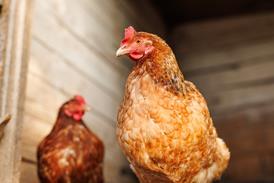



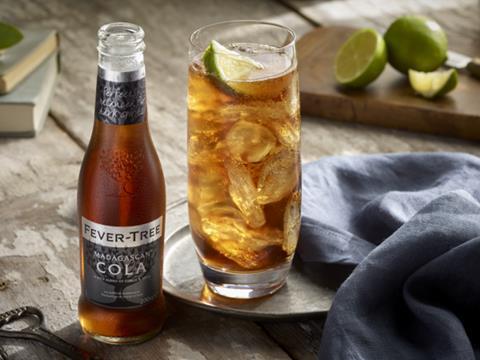
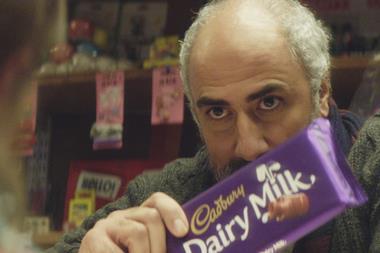

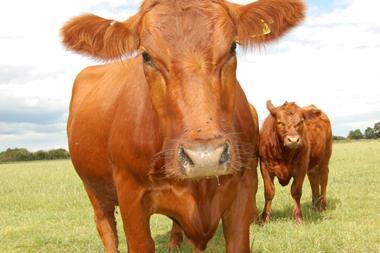
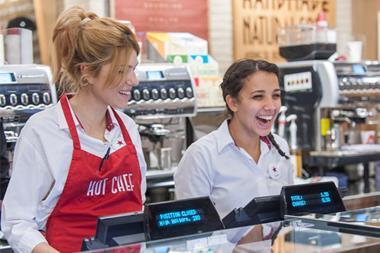
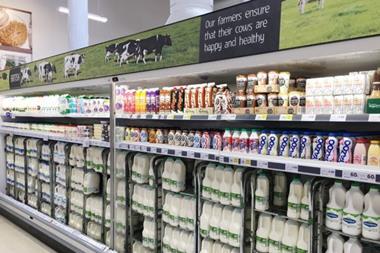
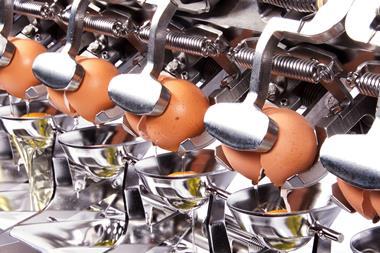






No comments yet